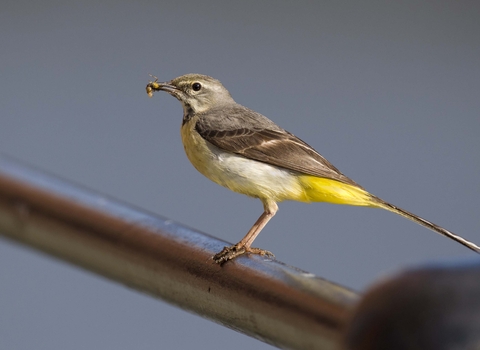
©Bertie Gregory/2020VISION
Grey wagtail
A breeding bird of fast-flowing, upland rivers, the grey wagtail can also be seen in lowland areas, farmyards and even towns in winter.
Scientific name
Motacilla cinereaWhen to see
January to DecemberSpecies information
Statistics
Length: 18-19cmWingspan: 26cm
Weight: 18g
Average lifespan: 3 years
Classified in the UK as Amber under the Birds of Conservation Concern 5: the Red List for Birds (2021). Protected in the UK under the Wildlife and Countryside Act, 1981.
